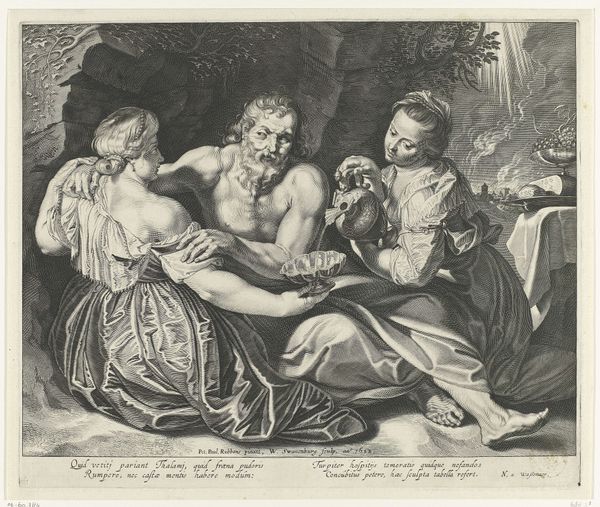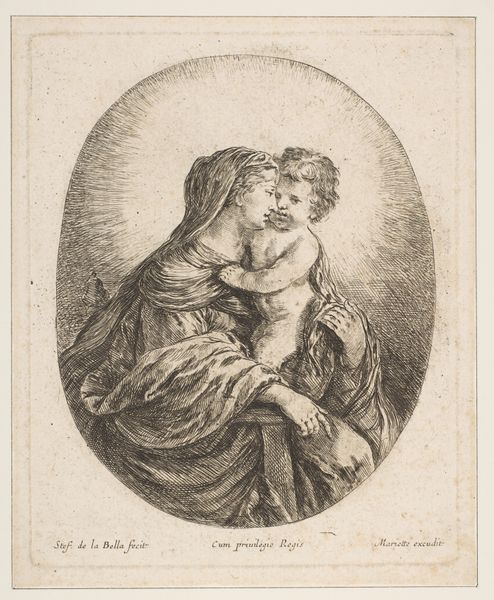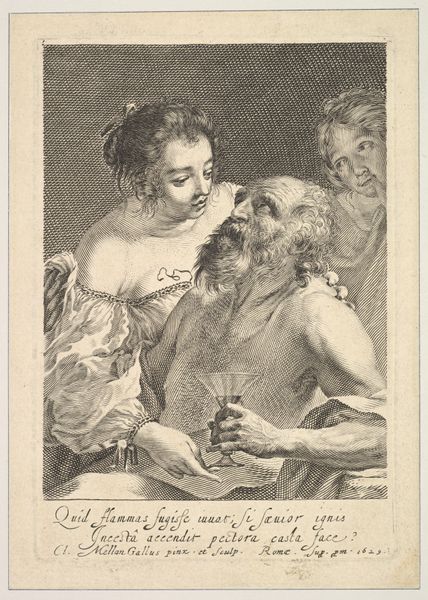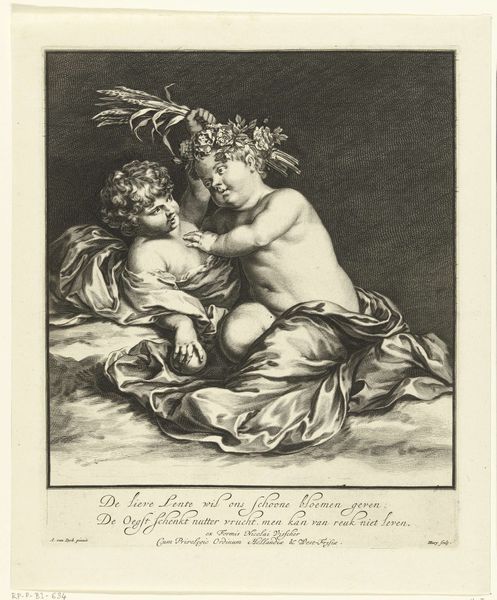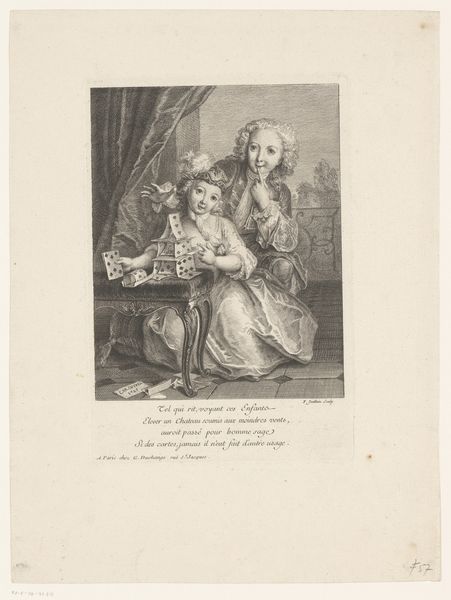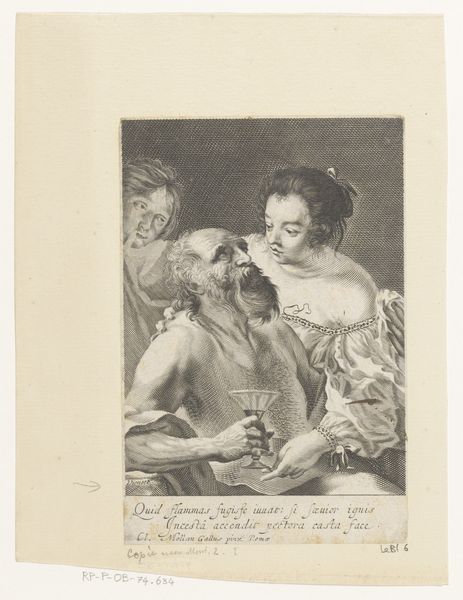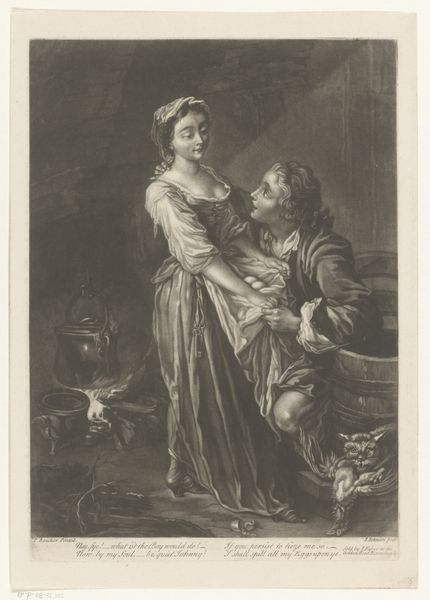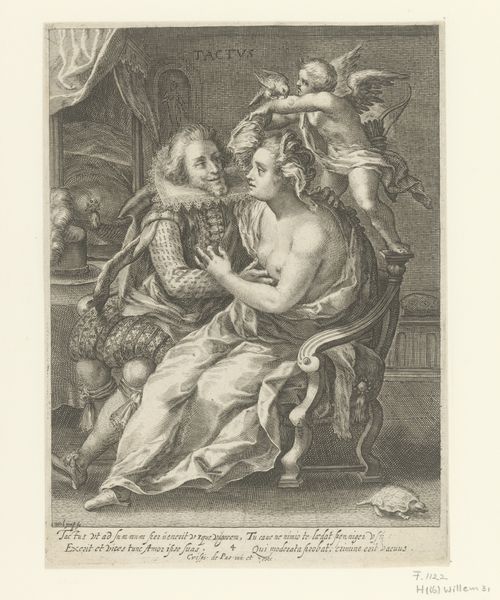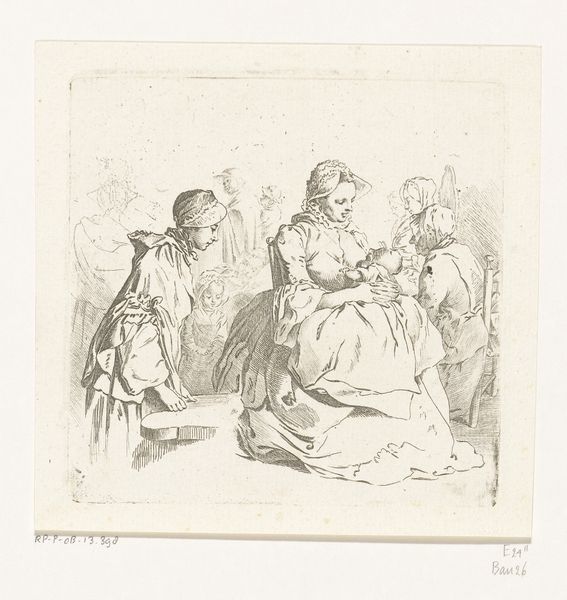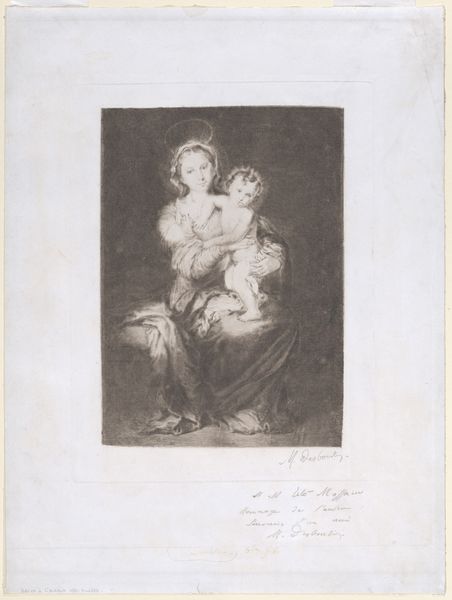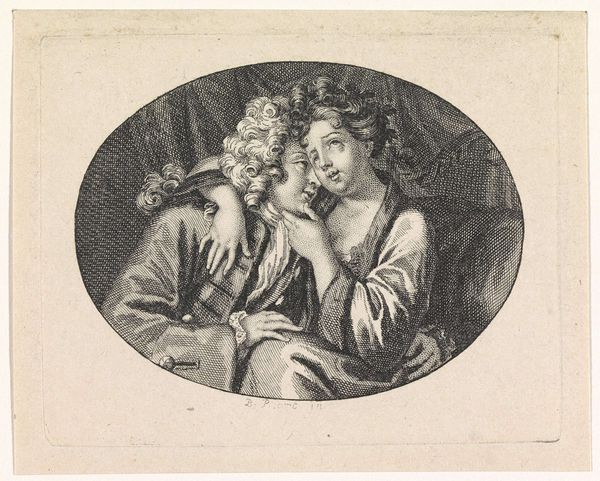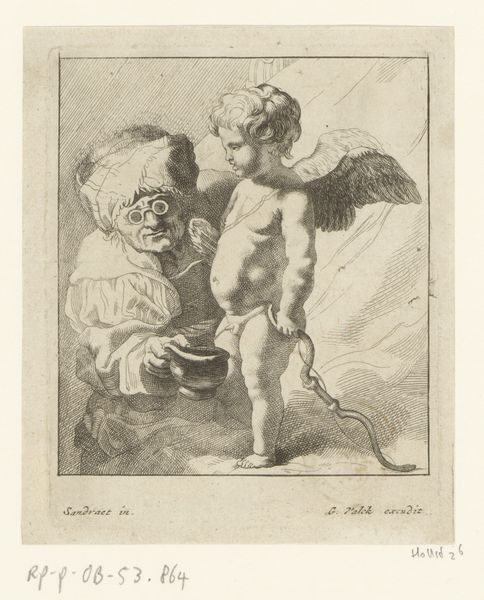
print, engraving
#
baroque
# print
#
figuration
#
history-painting
#
nude
#
engraving
Dimensions: height 168 mm, width 116 mm
Copyright: Rijks Museum: Open Domain
Curator: This engraving, dating from after 1629 and currently held at the Rijksmuseum, is titled "Lot and His Daughters". Editor: It’s visually quite stark; the tonal range is narrow, focusing attention on the density of lines. It’s rather unsettling, wouldn't you say? Curator: Indeed. Note the artist's use of hatching and cross-hatching to create a sense of depth and volume. The figures emerge from a textured background, which amplifies the drama. What does that choice tell you about its making? Editor: I immediately think about the engraver laboriously carving into a metal plate, each line representing time and pressure. There's a deliberate contrast between the smooth skin of the daughters and the etched roughness of Lot's beard – textures achieved by manipulation of the burin and a commitment to an iterative process. It’s as much about skilled labor as artistry. Curator: And observe how the composition guides our eye. Lot, seemingly drunk and vulnerable, is positioned centrally, flanked by his daughters. Their gaze, averted from the viewer, draws us into their secretive world. The engraving also includes the title and credits at the very bottom of the engraving as integral parts of its formal composition. Editor: That subtle visual direction leads us to contemplate what motivated the patron to request that particular representation. It leads us to understand the story beyond religious scripture – a moment in which power dynamics between women and their father shifted because of desperation in fleeing Sodom. What impact do you think it would've had for early audiences given their views of sexuality, morality, and perhaps patriarchy at the time of the work's production? Curator: The success of "Lot and His Daughters" stems from this technical virtuosity, offering viewers both a visually striking composition and complex psychological insights. It reveals something deeper about the story itself as well. Editor: I concur. Examining how engravings functioned socially provides vital information in that their material accessibility and replicability allows stories that once rested solely in paintings and texts become popularized during this early era! This specific process of artistic reproduction highlights broader socio-cultural shifts during that time!
Comments
No comments
Be the first to comment and join the conversation on the ultimate creative platform.
